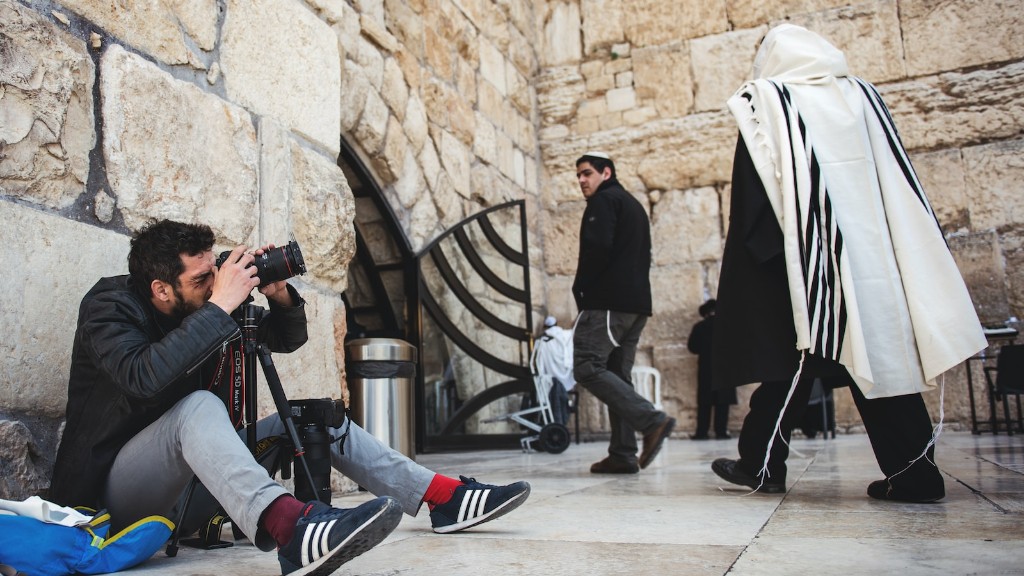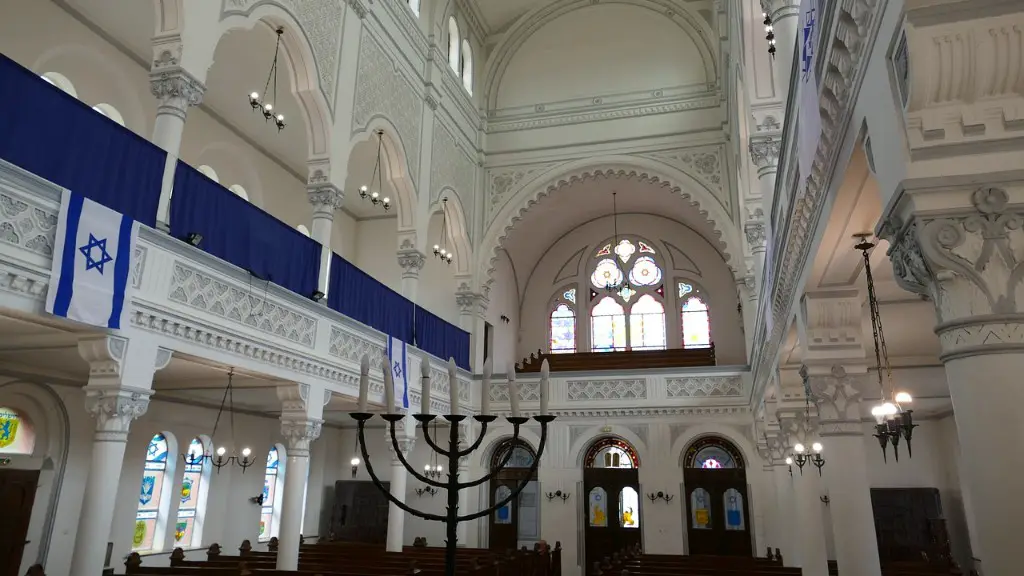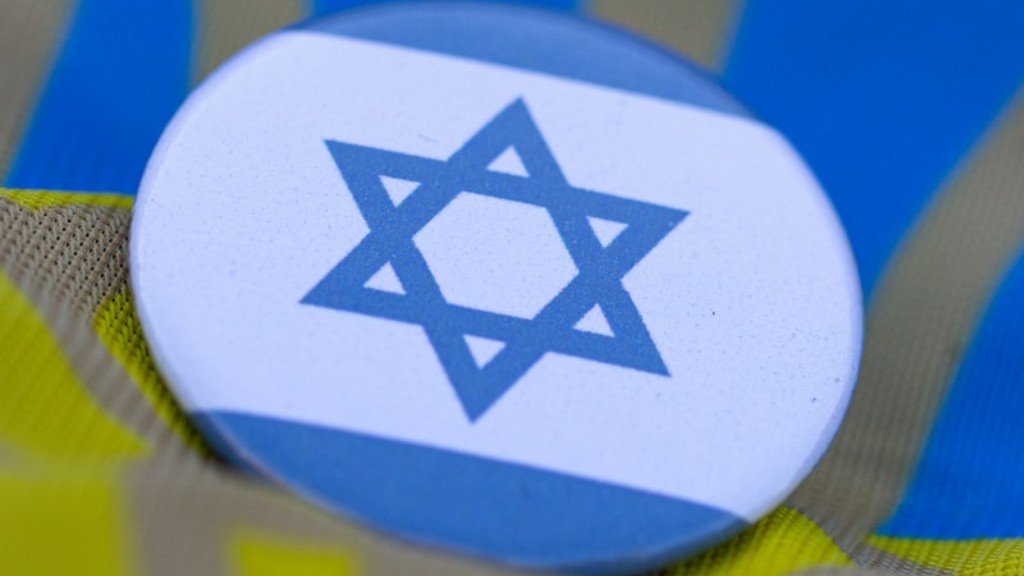Historical Significance Of Clothing In Judaism
Judaism has a rich history of clothing and the clothing of Jews has been used as a way to identify their beliefs and distinguish their heritage for centuries. Early clothing of Jews was largely dictated by the laws and customs of the religion. Some of the most common items of traditional clothing include a kippah or yarmulke, a tallit, and a kittel. The kippah is a head covering worn by orthodox Jewish men, while the tallit is a prayer shawl that is worn by Jews during prayer. A kittel is a white robe often worn by Jewish men during important religious holidays.
Throughout history, the clothing of Jews has taken on many forms, with clothing changing depending on the region and the era. For example, Jews living in Eastern Europe during the 19th century wore long black coats, headscarves and large hats to set themselves apart from non-Jews. In addition, Jews living in Arab countries wore long white robes, fez hats, and sandals as part of their traditional attire. As a result, Jewish clothing continues to be an important part of the culture, providing a visual representation of the religions beliefs and customs.
Modern Clothing In Judaism
Today, many Jews continue to dress in traditional clothing, though the styles and colors may have changed over time. The traditional kippah or yarmulke can still be seen amongst orthodox Jews, although many non-Orthodox Jews also wear the kippah to demonstrate their religious identity. In addition, prayer shawls, or tallitot, are still worn by many Jews during prayer and on special occasions, often accompanied by a kittel. Women can also be seen wearing head scarves and long skirts in public.
Other clothing pieces popular amongst modern Jews include the tzitzit and tfillin, which are worn daily by many Orthodox Jews as a sign of piety. The tzitzit is a fringed garment worn over a shirt and the tfillin are two black boxes containing scrolls of parchment. The tfillin are worn strapped to the forehead and the arm. Many Jews also wear traditional clothing during special occasions, such as Passover, Bar Mitzvahs, and weddings.
Factors Influencing Jewish Clothing
The clothing of Jews is heavily influenced by the various cultures, regions and periods in which they live. Many fabric and color combinations are commonly seen in Judaica jewelry, scarves and hats, which reflect the individual cultures. Jewish clothing during different periods in history was also heavily influenced by the ruling powers of the time, often adopting the popular dress style of the ruling populations.
In addition, modern Jewish clothing is often reflective of the personal beliefs and values of the individual. In certain cases, religious clothing has been used to help express the individual’s personal sense of spirituality or identity. Some of these items include earrings, necklaces, religious symbols, and clothing pieces with meaningful quotes or symbols.
Religious Laws Affecting Clothing
Judaism has an established set of laws and regulations which dictate how Jews should dress and what types of clothing are appropriate. In general, clothing must be modest, although exactly how modest can vary between Orthodox, Conservative, and Reform interpretations of the religion. Generally, men should cover their shoulders and refrain from wearing short shorts or tight fitting clothing, while women should cover their legs, arms and neckline.
Modesty codes are also discussed in the Torah. Leviticus 19:28 states, ‘You shall not make any cuts in your body for the dead nor make any tattoo marks on yourselves: I am the Lord.’ This has created controversy amongst modern Jews, since tattoos are popular in many countries. However, many Reform and Conservative Jews choose to interpret this passage metaphorically and do not believe it applies to modern tattooing.
Fashion Trends In Judaism
Fashion trends in Judaism have changed significantly over the years. During the 19th century, there was a move toward more traditional clothing styles, but contemporary styles have become increasingly popular amongst Jews in the 21st century. Jews living in secular countries are often influenced by the same fashion trends as the rest of society, and many choose to dress in a style that is not tied to religion or culture.
Unlike other religious communities, Judaism does not have a uniform set of fashion standards. Jewish women continue to look for new ways to express their religious identity through clothing and incorporate Jewish symbols and themes into their clothing. For example, many young Jewish women have found ways to combine traditional headscarves, prayer shawls and modest dress with contemporary fashion trends.
Religious Clothing Celebrating Special Events
Many Jews celebrate special religious events, such as Shabbat, Passover, Hanukkah and Purim, by wearing special clothing. Many men opt to wear a kittel, or white robe, during various religious holidays, such as Rosh Hashanah and Yom Kippur. During Passover, traditionally dressed Jews may also drape a table runner called a “Kittel” or “Tahor Niyar” over their table. Likewise, women may wear a traditional long dress or skirt with a blouse and a shawl when attending a Jewish gathering or event in order to show respect.
Other pieces of clothing also hold significance during certain Jewish holidays. For example, during Hanukkah, Jewish men can be seen wearing a military-style coat or cape known as a Makkabi or “Macute” to commemorate the Maccabees soldiers. Boys often dress up in traditional clothing during Purim, a holiday that celebrates the saving of Jews in the Persian Empire.
Modern Orthodox Dress And Its Impact On Jewish Communities
Modern Orthodox communities have a distinct dress code that seeks to demonstrate religious beliefs and values. This dress code emphasizes modesty, respect for religious traditions, and adherence to traditional gender roles. The emphasis on modesty has resulted in many separated seating and praying sections in synagogues and other religious locations for men and women.
The modern Orthodox dress code has resulted in heated debates within the Jewish communities. On the one hand, some argue that it is important to honor traditional religious clothing and remain loyal to the laws and customs of the faith. However, others argue that this type of clothing may be isolating, since it can create a sense of detachment from secular society and make it difficult to participate in everyday life.
The Impact Of Social Media On Jewish Clothing
The emergence of social media has had a major impact on many aspects of the Jewish faith, including fashion. Many modern Jews have used platforms such as Instagram and Pinterest to share their unique sense of style and connect with other Jews around the world. This cultural influence has also led to a greater acceptance of modern, secular clothing within Orthodox communities as Jews seek to express their faith in new and creative ways.
At the same time, the growing presence of Jews on social media has also led to an increase in online vendors selling Judaica clothing and accessory pieces. These online stores offer easily accessible, often customized, clothing pieces for special occasions, offering Jews a range of religious and contemporary styles to choose from.
Clothing As A Symbol Of Jewish Identity
Clothing has long been used as a form of expression, and is even more important for Jewish people, since clothing is a vital part of their identity and culture. Jewish clothing is often used to demonstrate membership within the community and to communicate loyalty to the faith. Along with religious clothing pieces, Jews also often choose to dress themselves in traditional fabrics and patterns to show their connection to their culture and heritage.
As a result, Jews around the world have come to embrace their unique dress styles, celebrating their diversity and highlighting the importance of clothing to their identity. Even amongst Reform Jews, traditional clothing is an important part of their culture and continues to be worn to show a connection to their faith and culture.


